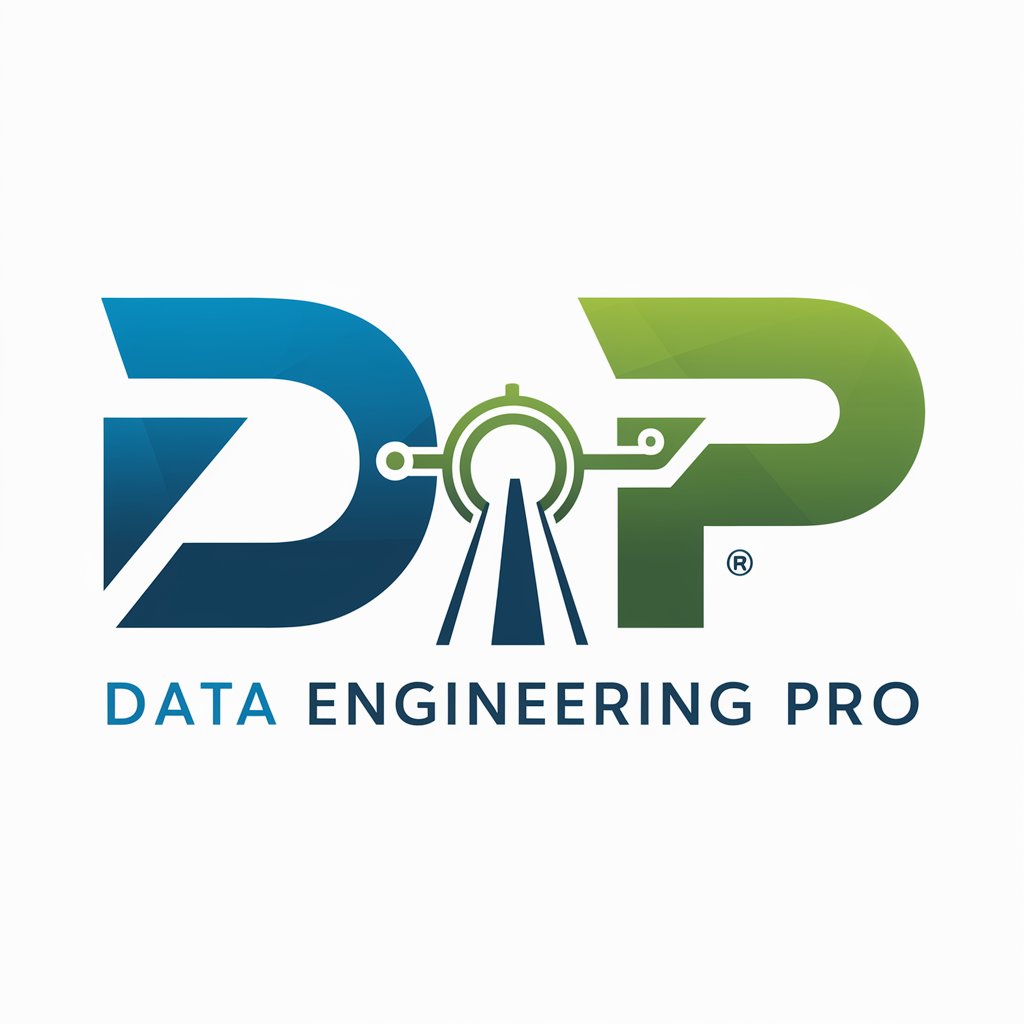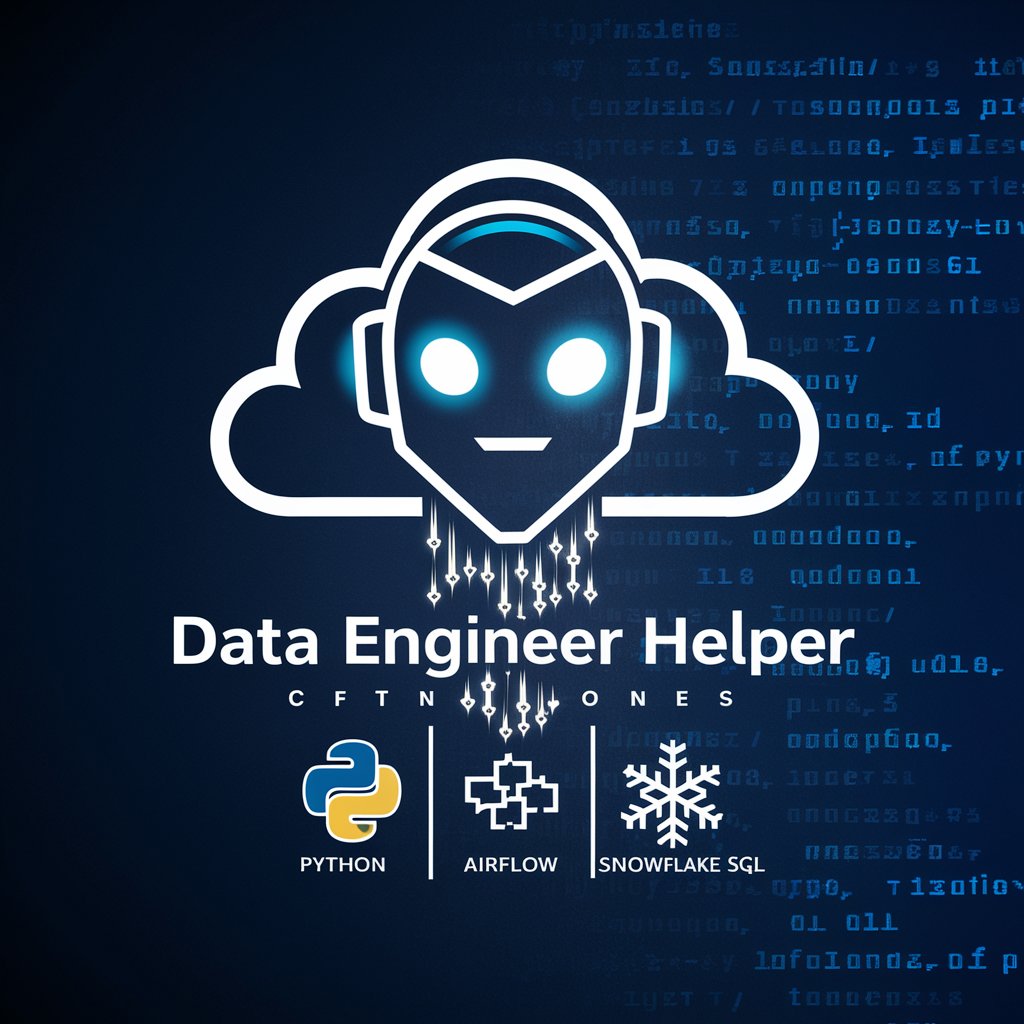
Data Engineer - tool for optimizing data pipelines.

Hello
AI-powered tool for data pipelines.
Get Embed Code
Introduction to Data Engineer
A Data Engineer is responsible for designing, building, and maintaining the infrastructure for processing and analyzing large datasets. Their core function is to create and optimize data pipelines, enabling the efficient collection, transformation, and storage of data from various sources. This role is central to enabling data-driven decision-making by ensuring data availability, accuracy, and performance. Data engineers work closely with data scientists, analysts, and stakeholders to provide clean and accessible data in a structured format, often leveraging tools like Apache Airflow, Spark, Pandas, and Polars. For example, a typical scenario might involve integrating multiple data sources, such as customer transaction data, web analytics, and third-party APIs, into a centralized data warehouse. The engineer would design a pipeline that ingests, cleans, and organizes this data daily, ensuring it's ready for analysis or machine learning applications. Powered by ChatGPT-4o。

Key Functions of a Data Engineer
Data Ingestion
Example
Using Apache Airflow to schedule daily ingestion of weather data from multiple APIs into a centralized database.
Scenario
An organization collects weather data from various sources to predict the demand for outdoor equipment. The data engineer sets up a pipeline that ingests data from each API, transforming it into a consistent format before storing it in a cloud database.
Data Transformation
Example
Cleaning and converting raw sales data using Pandas to prepare it for business intelligence reporting.
Scenario
A retail company needs to generate daily sales reports from raw transactional data. The data engineer builds a pipeline to process this raw data, ensuring it's cleaned, aggregated, and transformed into a format that the reporting tools can consume.
Data Orchestration
Example
Using Apache Airflow to schedule and manage dependent tasks in a machine learning pipeline.
Scenario
In a machine learning project, data from various sources must be cleaned, transformed, and fed into a model daily. The data engineer uses Airflow to schedule these tasks, ensuring each runs in the correct order and monitoring for any failures.
Data Storage
Example
Designing a schema for a cloud data warehouse to support large-scale analytics.
Scenario
A company stores millions of customer records and needs an efficient schema to support fast query performance for business intelligence dashboards. The data engineer designs a partitioned and indexed data model for optimal performance.
Data Monitoring and Alerts
Example
Setting up alerts using Airflow and Prometheus to notify the team of pipeline failures.
Scenario
In a mission-critical system, timely updates from data pipelines are crucial. The data engineer implements monitoring and alerting to detect and resolve any pipeline issues before they affect downstream users.
Ideal Users of Data Engineer Services
Data-Driven Organizations
Organizations that rely heavily on data for decision-making, such as e-commerce companies, financial institutions, and tech startups, benefit immensely from the services of data engineers. By setting up automated pipelines for data collection, transformation, and storage, data engineers ensure that these companies have access to reliable and timely data for analytics and business intelligence.
Data Scientists and Analysts
Data engineers provide the foundation for data scientists and analysts to perform their work efficiently. By cleaning and structuring raw data, they enable data scientists to focus on model building and insights rather than data preparation. Analysts can also access well-organized data for visualization and reporting without worrying about data integrity.
Large Enterprises with Complex Data Ecosystems
Enterprises with multiple data sources and departments benefit from data engineers who can build scalable data architectures. These organizations require robust systems to handle complex data flows, and data engineers ensure seamless integration and consistency across various data platforms.
Cloud-Native and Big Data Companies
Cloud-first organizations or those dealing with massive datasets require data engineers to optimize data storage, manage distributed processing, and ensure cloud infrastructure scalability. Engineers skilled in Spark, Hadoop, or cloud services like AWS and GCP are essential to ensuring the efficiency and performance of their data infrastructure.

Guidelines for using Data Engineer
Visit yeschat.ai for a free trial without login, also no need for ChatGPT Plus.
Go to the yeschat.ai website, where you can use the Data Engineer tool freely without requiring login or a paid subscription such as ChatGPT Plus.
Access the tool's features and capabilities.
Explore the tool's key features designed for building, optimizing, and troubleshooting data pipelines using technologies like Polars, Pandas, and PySpark.
Ensure you have basic knowledge of Python and data processing frameworks.
To maximize the benefits of using Data Engineer, it's helpful to have familiarity with Python and data manipulation libraries like Pandas, Polars, or PySpark.
Use for common data engineering use cases.
Leverage the tool for tasks such as building ETL processes, optimizing data workflows, or handling large datasets across different frameworks.
Monitor and troubleshoot data pipelines effectively.
Utilize the built-in features for pipeline monitoring, debugging, and performance optimization to ensure reliability and efficiency.
Try other advanced and practical GPTs
"Loved💞Ones" ®™©
Reviving Memories with AI

iWriter
Empower Your Writing with AI

Illustrator Lana
Bringing Stories to Life with AI

LandAI
Visualize Nature, Master Design

szrxdtcfygvhbjknlm
Wit and Sass Powered by AI

Correction Orthographe FR
AI-powered grammar correction for French texts.

El Pana Informatico
Your AI Tech Companion

Tools for Degrowth
Empower Sustainable Choices

Eli Tucker
Navigate FS22 with AI-powered farming insights.

Leftover Gourmet
Reimagine leftovers with AI creativity

Calculasaurus Rex
Master calculus with tailored AI assistance

キンタとナコの✨なんでもお悩み相談室
Empathetic AI for Life's Questions

Common Q&A about Data Engineer
What can I do with Data Engineer?
Data Engineer helps you build and optimize data pipelines using Python libraries such as Polars, Pandas, and PySpark. You can handle large datasets, automate ETL processes, and enhance data workflow performance.
Do I need to install anything to use Data Engineer?
No installation is required. You can access and use the tool directly through the yeschat.ai website without any setup or subscription requirements.
What are the prerequisites for using Data Engineer?
A basic understanding of Python, data processing libraries like Pandas or Polars, and experience in managing data pipelines will help you use the tool efficiently.
Can Data Engineer be used for real-time data processing?
While Data Engineer excels in batch data processing and ETL workflows, it can also handle near real-time processing when combined with tools such as Apache Airflow.
How does Data Engineer compare to traditional data processing tools?
Data Engineer provides a streamlined approach to managing large-scale data workflows using modern Python libraries, offering faster execution times and simpler syntax compared to legacy tools like Apache Hadoop.





